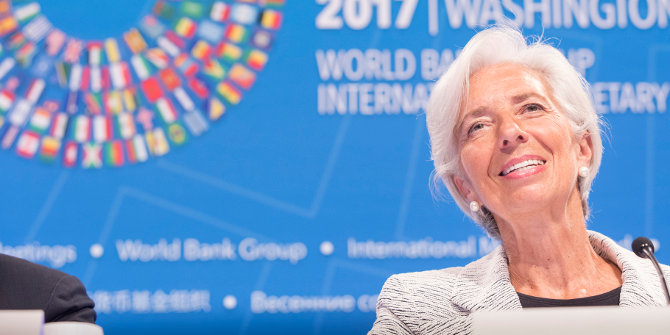
The Italian banking crisis is the outcome of two factors. First, a deep recession that caused many borrowers to become insolvent during the last five years. Second, the mismanagement of some banks, mostly regional banks (with the exception of MPS, which is the third bank in the country), that did not follow sound practices and in some cases made even illegal acts. As a result, the (gross) amount of bad loans soared to an unprecedented 200 billion euro, although more than half of this amount has already been covered by banks themselves through loan loss provisions, so the net amount of bad loans is around 85 billion.
If Italian banks were to sell their bad loans in the market, they would incur huge losses. A back-of-the-envelope computation, just to have an idea of the amounts we are talking about, is the following. Let the accounting value of bad loans be 40 per cent of their face value, and the market price of bad loans be 20 per cent (this was roughly the value given to bad loans of Banca Etruria and of the other three banks that went under resolution last year). This implies that about 20 per cent of gross NPLs (non performing loans) must still be accounted for in the balance sheets of Italian banks, which is equivalent to 40 billion euro.
This is the reason why the stock exchange has heavily penalised Italian banks in recent months, and particularly since the referendum on Brexit has introduced a further element of uncertainty in the European economic and financial landscape. The total market value of Italian banks has almost halved since the beginning of this year. Of course, banks of other countries have lost much value as well, although to a lesser extent and partly for different reasons.
The Italian government has tried to tackle the situation by coordinating the institution of a new fund, named Atlante, with the purpose of providing a backstop for those banks trying to raise funds in the stock exchange, and also to make some deals in the market for non-performing loans. Atlante has been successful in providing a safety net in a couple of cases, by buying shares issued by Banca Popolare di Vicenza and Veneto Banca. However, the endowment of the fund (about five billion) is by far not sufficient to fix the problem of NPLs for the aggregate banking system.
At present, the market expectation is that Atlante will be able to make a deal for the sell-off of MPS bad loans, but at that point it will have almost exhausted its endowment. As a consequence, Italian banks will have to sell their NPLs at prices below their current accounting values. This in turn will create for several banks the need of raising new capital, and the chances of covering all such capital needs with private resources are quite limited.
Therefore, the Italian government is negotiating with the EU Commission the possibility of making capital injections with public money into MPS, and possibly other intermediaries in the future, acting as a public backstop. The negotiation is being carried out within the regulatory framework introduced by the Bank Recovery and Resolution Directive (BRRD) (see here for a description). The BRRD has introduced a regime for banks where any support, either from the government (art.37) or from the resolution fund (art. 44), triggers a resolution procedure where at least 8 per cent of bank liabilities must be hit by the bail-in, through either write-downs or debt-to-equity conversions.
The application of this rule to outstanding bank liabilities, held by retail savers, has turned out to be very problematic: retail bank customers are not familiar with the new regime, and they are not able to have a clear assessment of the risks they incur when they buy a bank bond or deposit money on a current account. However, the BRRD itself provides an exception to the above rule. It enables governments to support banks, without triggering the resolution, when the public financial support is needed to preserve the financial stability of a country (art. 32). In such a case, a government can inject own funds into a bank, but only to address a capital shortfall resulting from an asset quality review (AQR) or a stress test performed by the supervisors.
The European Banking Authority (EBA) is currently running a stress test on a sample of 53 European banks, including 5 Italian ones, among which MPS. The outcomes of this stress test will be released at the end of July. In parallel, the ECB is running a stress test on the remaining significant institutions of the euro area, and its outcomes will be used by the ECB to take supervisory actions within its supervisory review process (SREP).
Following the above-mentioned art.32 of the BRRD, any capital injection made by the Italian government into a domestic bank, to cover a shortfall resulting from the stress test, should not trigger a resolution, thus avoiding the bail-in of (senior and junior) bondholders. Of course, such support should happen within the EU State aid framework. However, note that even the EU Commission’s Communication of 2013 enables governments to support banks without triggering the burden-sharing rule, when such rule would “endanger financial stability or lead to disproportionate results” (point 45). Therefore, it is reasonable to expect that the EU institutions (Commission and Council) will allow the Italian government to intervene and support the banking sector, within the European regulatory framework.
♣♣♣
Notes:
- The post gives the views of its author, not the position of LSE Business Review or the London School of Economics.
- Featured image credit: Monte dei Paschi di Siena Bank, by Petar Milošević, own work, CC BY-SA 4.0
- Before commenting, please read our Comment Policy
 Angelo Baglioni is Professor of Economics at Università Cattolica del Sacro Cuore in Milan. In the past (1988-1997), he was an economist in the Research Department of BCI (now Banca Intesa Sanpaolo). His main research interests are in the fields of financial intermediation, central banking, and corporate governance. Recent topics include: liquidity crisis, bank leverage and pro-cyclicality, sovereign debt crisis in Europe.
Angelo Baglioni is Professor of Economics at Università Cattolica del Sacro Cuore in Milan. In the past (1988-1997), he was an economist in the Research Department of BCI (now Banca Intesa Sanpaolo). His main research interests are in the fields of financial intermediation, central banking, and corporate governance. Recent topics include: liquidity crisis, bank leverage and pro-cyclicality, sovereign debt crisis in Europe.





